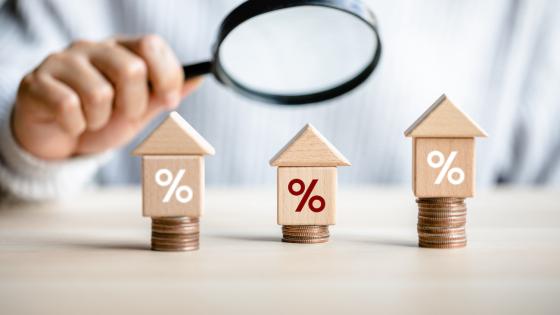Real estate transaction taxes are a common feature of tax systems around the world, representing an important form of government tax revenue and fiscal tool. In the UK, the real estate transaction tax is called Stamp Duty Land Tax (henceforth, ‘stamp duty’). Stamp duty generated £14 billion during the financial year 2021-22, which is about 2% of total tax revenue.
Since 2008, the stamp duty rates have been revised 13 times, often as a tool to stimulate housing transactions as part of the countercyclical fiscal policy package, especially around the Global Financial Crisis of 2008 and the onset of Covid-19.
There are, however, growing concerns about the fundamental costs of real estate transaction taxes among policymakers and academic researchers. Two prominent examples are the Henry Review by the Australian government (Henry et. al. 2009) and the Mirrlees Review by the UK government (Mirrlees et. al. 2010). Both found significant costs of transaction taxes owing to reduced mobility and distortions associated with ad-valorem taxes. The reviews proposed reforms to replace transaction taxes with a land value tax or a tax on housing consumption.
These findings have been confirmed by economists using data from Australia, Canada, Finland, Germany, the UK, and the US. Most research has focused on the effects of transaction taxes on mobility, transaction volumes, or house prices. A few studies have also computed the welfare costs of transaction taxes per unit of tax revenue raised (for a review of the findings on welfare effects, see Maattanen and Tervio 2020). These losses are due solely to effects on the intensive margin of fewer transactions and reduced mobility of homeowners. However, little is known about the implications of transactions taxes for households’ tenure choices. This has been largely overlooked by the literature for the last 30 years, since Porteba (1992) noted that “finding the ultimate behavioral effects requires careful study of how tax parameters affect each household's decision of whether to rent or own as well as the decision of how much housing to consume conditional on tenure”.
The aim of our recent paper (Han et al. 2022) is to gain a comprehensive understanding of the impact of transaction taxes on housing markets through households’ decisions along both the intensive margin (moving and transaction decisions) and the extensive margin (the decision to own or to rent), and landlords’ investment decisions. These decisions determine not only the mobility within the ownership market but also the allocation of properties across the markets for ownership and rentals, and hence the homeownership rate.
We start by making use of a unique dataset on housing sales and leasing transactions from the Multiple Listing Service records of the Greater Toronto Area (GTA) between 2006 and 2018. The data make it possible to examine both owner-occupied and rental markets and to distinguish purchases made by buy-to-rent investors and by owner-occupiers. In 2008, the City of Toronto introduced a new city-level transaction tax, known in Canada as a Land Transfer Tax (LTT), at an effective rate of 1.3% of the property price. Importantly, the new tax covers only the City of Toronto a not other parts of the GTA, making it possible to estimate the effects of the tax by comparing housing transactions and homeowner mobility before and after the new LTT across treated and untreated neighbourhoods.
We find three novel effects of the new LTT:
- higher buy-to-rent transactions alongside lower buy-to-own transactions, despite both being taxed the same
- lower sales-to-leases and price-to-rent ratios
- owner-occupiers staying in the property longer and it taking longer to sell a property.
The first two findings indicate a shift towards the rental market, consistent with a recent fall in homeownership in Toronto. The finding of a longer time to sell suggests that LTT interacts with search frictions to generate a decline in buy-to-own transactions.
We explain these facts by developing a search model to jointly analyse the property ownership and rental markets. Households choose which market to participate in, subject to paying a credit cost to access the ownership market. Setting the costs of homeownership against its benefits gives rise to an entry decision on the ‘buy’ side of the rental market. On the ‘sell’ side, there is free entry of buy-to-rent investors. The equilibrium homeownership rate is the one consistent with the behaviour of both households and investors.
Within the ownership market, the source of the time taken to sell a property can be broken down into two types of search frictions: first, the time needed for buyers to locate potentially desirable houses to view, which is determined by the ratio of buyer to seller in the market; and second, the match quality between the potential buyer and the house, which is revealed only at the viewing.
Match quality – a persistent variable subject to occasional changes – represents life events that make a particular property less well-suited to a particular household. When the match quality falls below an equilibrium threshold, the owner-occupier decides to move. Households will decide to move on a number of occasions throughout their lives. Hence, choosing to be an owner-occupier rather than a renter means expecting to pay the new LTT during every move. This dissuades some potential home-buyers from paying a credit cost to enter the ownership market, and they remain renters.
Investors also face paying the higher LTT, which reduces the return from purchasing a property. However, a landlord does not need to transact again just because a tenant moves out. This implies that investors have less need to transact than owner-occupiers. So, while the LTT also has a direct negative effect on supply in the rental market, this effect is relatively smaller than the increase in demand for rental properties. Higher LTT causes the price-to-rent ratio to fall by enough to attract more buy-to-rent investors in spite of the higher tax. Investor purchases of properties from owner-occupiers cause the homeownership rate to decline. Buy-to-rent purchases and leases increase while purchases by owner-occupiers decline, consistent with the empirical evidence.
Within the ownership market, the higher LTT makes existing owner-occupiers more tolerant of poor match quality, so households remain in properties for longer. Since match quality with a property has some persistence, households can mitigate the increased tax costs of moving by requiring higher match quality when making a property purchase, thus reducing the need to move in the future. Greater pickiness among buyers leads to longer average time on the market for sellers.
The model spells out two facets of the welfare implications of transaction taxes that are closely related to its positive predictions.
The first is a novel effect of misallocation of properties across the rental and ownership markets due to the fall in buy-to-own and the rise in buy-to-let, indicating that some creditworthy households are forced into rental markets.
Second, there are two effects within the ownership market, owing to longer time-to-move and longer time-on-the-market. Longer time-to-move represents a conventional ‘lock-in’ effect, which gives rise to misallocation of properties among owner-occupiers. Longer time-on-the-market, on the other hand, implies that newly matched owner-occupiers enjoy a better initial match quality, but also means they have to pay for the search cost and derive no match quality for the longer wait. When the model is calibrated to the Toronto market, we find the new LTT generates a welfare loss equivalent to 113% of the revenue it raises, which is much larger than previous findings that ignore the rent versus own margin. Across the markets, the distortions imply a loss of 60% of revenue raised. Distortions within the rental and ownership markets lead to losses of 14% and 40% of tax revenue, respectively.
We consider two alternative ways of raising tax revenue from housing. First, a higher tax on buy-to-rent investors offsets the implicit advantage that investors derive from a tax system with equal rates. This puts up the barriers to entry for investors and reduces the across-market welfare losses by keeping up the homeownership rate. There is one important caveat, however: further increasing the tax on buy-to-rent investors to raise homeownership rates would ultimately lead to large welfare costs as uncreditworthy households are forced into the ownership market because of a lack of rental properties. Deep-pocketed investors play an important role in providing access to housing without everyone needing to pay credit costs.
The second alternative is a higher housing consumption tax as proposed by the Henry Review and the Mirrlees Review. As in the case of a higher tax on buy-to-rent investors, increasing the housing consumption tax removes the implicit tax advantage of investors over homeowners, as all owners must pay a higher tax independent of their transaction frequency. This alternative tax has a negligible effect both within the ownership market and across the rental and ownership markets, resulting in negligible welfare effects.
References
Henry, K, J Harmer, J Piggott, H Ridout and G Smith (2009), Australia’s future tax system, Final Report, Commonwealth of Australia.
Mirrlees, J, S Adam, T Besley, R Blundell, S Bond, R Chote, M Gammie, P Johnson, G Myles and J Poterba (2010), Dimensions of Tax Design, Oxford University Press.
Han, L, L R Ngai and K D Sheedy (2022), “To Own or to Rent? The Effects of Transaction Taxes on Housing Markets", CEPR Discussion Paper 17520.
Maattanen, N and M Tervio (2020), “Welfare effects of housing transaction taxes”, CEPR Discussion Paper 12551.
Ngai, L R and K D Sheedy (2020), “The decision to move house and aggregate housing-market dynamics”, Journal of the European Economic Association 18(5): 2487–2531.
Poterba, J M (1992), “Taxation and housing: Old questions, new answers”, American Economic Review 82(2): 237–242.





